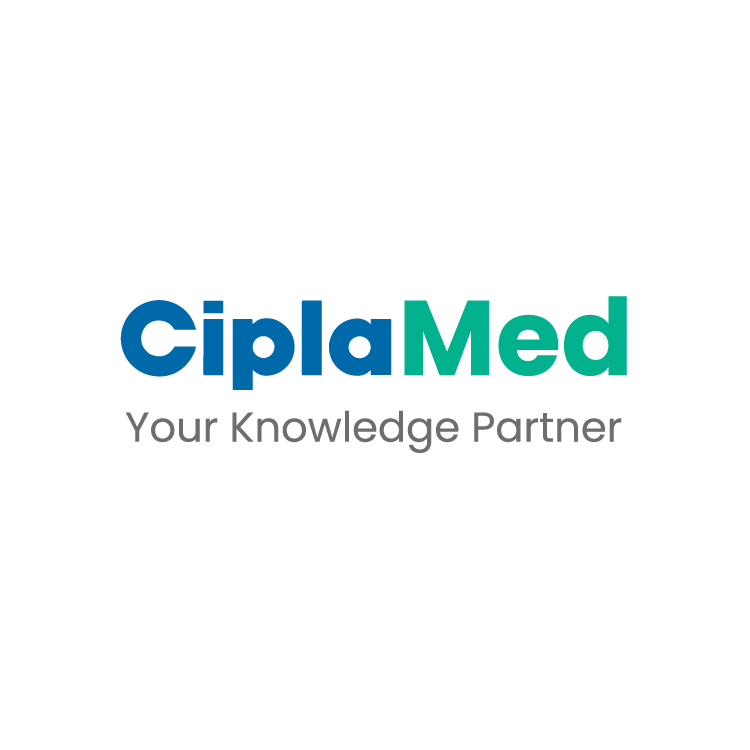ASCO 2025: Highlights from Day 4
SURPASS-ET Phase III Trial: Ropeginterferon Alfa-2b vs. Anagrelide in Essential Thrombocythemia
- Ropeginterferon alfa-2b (Ropeg) achieved a primary endpoint response rate of 42.9% compared to 6.0% for anagrelide (p=0.0001) in hydroxyurea-resistant or intolerant essential thrombocythemia patients.
- Ropeg demonstrated significant improvements in platelets ≤ 400x109/L (56.0% vs. 6.0%), splenomegaly improvement (87.9% vs. 54.2%), and symptom stabilization (71.4% vs. 33.7%).
- Major thrombotic events were rare with Ropeg (1.1%) vs anagrelide (8.8%); no cardiovascular events occurred in the Ropeg group vs anagrelide (7.5%)
- Ropeg also showed a greater reduction in JAK2V617F allele burden (33.7% at baseline to 25.3% at 12 months) and lower adverse event discontinuation rates (5.5% vs. 18.8%).
Reference
Ruben Mesa et al, Ropeginterferon alfa-2b versus anagrelide for the treatment of essential thrombocythemia: Topline results of the phase 3 SURPASS-ET trial. JCO 43, 6500, (2025).
Phase 3b ASC4START Trial: Asciminib (ASC) vs Nilotinib (NIL) in Newly Diagnosed Chronic Phase Chronic Myeloid Leukemia (CML-CP) – Time to Treatment Discontinuation due to AE (TTDAE)
- ASC demonstrated superior tolerability compared to NIL based on TTDAE with HR = 0.45
- ASC treatment resulted in fewer patients who discontinued due to AEs vs NIL; 5.6% vs 12.1% and dose adjustment/interruption due to AEs was required in 24.3% vs 30.1%
- Incidence of any-grade AEs and grade >3 AEs with ASC and NIL was 80.3% vs 86.5% and 25% vs 31.9%
- MMR (22.9% vs 10.2%), MR4 (4.6% vs 1.1%), and MR4.5 (2.5% vs 0.4%) rates by wk 12 were higher with ASC vs NIL
Reference
Andreas Hochhaus et al, Primary endpoint results of the phase 3b ASC4START trial of asciminib (ASC) vs nilotinib (NIL) in newly diagnosed chronic phase chronic myeloid leukemia (CML-CP): Time to treatment discontinuation due to adverse events (TTDAE). JCO 43, LBA6501, (2025).
Pivotal KOMET-001 Study Phase 1b/2 Results: Ziftomenib Monotherapy Emerges as a New Treatment Option in Relapsed/Refractory (R/R) NPM1-Mutant Acute Myeloid Leukemia (AML)
- Ziftomenib 600 mg QD achieved 25% (CR/CRh) rate and 35% ORR in 112 patients with R/R NPM1-m AML (median age 69 yrs and follow-up 4.2 months) with ECOG Performance Status 0–1 (p=0.0058)
- The CR/CRh rates were similar in patients with and without prior exposure to venetoclax (21% vs. 24%)
- It was well tolerated with limited myelosuppression
- Discontinuations due to ziftomenib TRAEs were reported in 3% patients; Gr ≥3 TRAEs were seen in 40% patients (differentiation syndrome 13%, anemia, febrile neutropenia and thrombocytopenia ≤5% each, and QTc prolongation 2%)
- Ziftomenib achieved deep durable responses in R/R NPM1-m AML, CR/CRh rate in 23% phase 2 patients, with 67% MRD negativity among CR/CRh responders and comparable CR/CRh rates vs venetoclax (21% vs 24%)
Reference
Wang E., et al, Ziftomenib in relapsed/refractory (R/R) NPM1-mutant acute myeloid leukemia (AML): Phase 1b/2 clinical activity and safety results from the pivotal KOMET-001 study. JCO 43, 6506, (2025).
IMforte Trial Phase 3 Results: Lurbinectedin (Lurbi) + Atezolizumab (Atezo) as First-line (1L) Maintenance Treatment in Patients with Extensive-Stage Small Cell Lung Cancer (ES-SCLC)
- 1L maintenance treatment with lurbi + atezo significantly improved the independent review facility-progression-free survival (IRF-PFS) by 46% as compared to atezo in 660 patients with ES-SCLC (HR: 0.54) for a follow-up of 15-mo
- A significant OS benefit of 13.2 mo was achieved with lurbi + atezo versus (vs) atezo (HR: 0.73)
- A comparable median maintenance treatment duration was seen in the lurbi + atezo arm (4.1mo lurbinectedin and 4.2 mo atezolizumab), while a 2.1 mo duration was noted in the atezo arm
- Lurbi + atezo exhibited a well-tolerated safety profile; treatment-related AEs (TRAEs) in 83.5% patients in the lurbi + atezo arm vs 40.0% of patients in atezo arm; grade 3/4 TRAEs in 25.6% vs 5.8% and grade 5TRAEs in 0.8% vs 0.4%, respectively
- Treatment discontinuations due to AEs were noted in 6.2% patients on lurbi+ atezolizumab vs 3.3% on atezo therapy
- IMforte is the first global Phase 3 study that highlighted PFS and OS improvement with 1L maintenance treatment for ES-SCLC
Reference
Paz-Ares L., et al, Lurbinectedin (lurbi) + atezolizumab (atezo) as first-line (1L) maintenance treatment (tx) in patients (pts) with extensive-stage small cell lung cancer (ES-SCLC): Primary results of the phase 3 IMforte trial. JCO 43, 8006, (2025).
Secondary Results Insights from EA1181/Compass HER2 pCR Trial: pCR Prediction from Clinicopathologic Variables & HER2DX Genomic Test in Stage II/III HER2+ Breast Cancer Treated with THP
- The study population comprised of 2175 patients [clinical stage IIA: 58%, stage IIB: 33%, & stage III: 9%; nodal involvement (mostly cN1): 45%], 781 tumors were HER2+/ER- & 1394 HER2+/ER+.
- Disease progression rate with neoadjuvant taxane, trastuzumab, & pertuzumab (THP) treatment was 0.7%. The pCR rate was inversely proportional to cells staining for ER in patients with HER2+/ER+ breast cancer: 1-10%+, 62.5%; 11-69%, 51.6%; ≥70%, 22.5% (p <0.001).
- The pCR rate was significantly associated with higher grade, particularly; in HER2+/ER+ disease. T & N stage had no significant impact on pCR rate.
- The pCR rate was significantly greater for patients with a higher lower HER2DX pCR score, irrespective of the ER status.
Reference
Nadine Tung et al. Predicting pathologic complete response (pCR) from clinicopathologic variables and HER2DX genomic test in stage II/III HER2+ breast cancer treated with taxane, trastuzumab, and pertuzumab (THP): Secondary results from the EA1181/CompassHER2 pCR trial. JCO 43, 501, (2025).
15-Year Outcomes in Premenopausal Hormone Receptor-Positive Early Breast Cancer Patients in SOFT & TEXT Trials: Evaluating the Benefits of Adjuvant Exemestane (E) + Ovarian Function Suppression (OFS) or Tamoxifen (T)+OFS
- 815 Disease-free survival (DFS) events were recorded in SOFT & 669 in TEXT; deaths: 388 in SOFT & 325 in TEXT.
- In SOFT, patients treated with T+OFS T showed moderate persistent DFS benefits (HR 0.85; 0.72-1.00), BCFI benefit was also evident (HR: 0.82; 0.69-0.98). Treatment with E+OFS vs. T further reduced DFS events (HR 0.73; 0.61-0.86).
- The 15-yr DFS in SOFT was 67.0% (T grp), 70.5% (T+OFS grp) & 73.5% (E+OFS grp). The hazards of death decreased consistently but insignificantly for T+OFS T (HR 0.87; 0.68-1.10) & for E+OFS vs. T (HR 0.85; 0.67-1.08). 15-yr OS was 85.3%, 86.7%, 86.9% respectively.
- As per the TEXT+SOFT combined analysis the DFS, BCFI & DRFI improved continuously & significantly in E+OFS T+OFS. The 15-yr DFS improved (74.9% vs.71.3%; HR: 0.82, 0.73-0.92), with not much difference in 15-yr OS (87.8% vs. 87.0%; HR:0.94; 0.80-1.11).
Reference
Prudence Francis, et al. 15-year outcomes for women with premenopausal hormone receptor-positive early breast cancer (BC) in the SOFT and TEXT trials assessing benefits from adjuvant exemestane (E) + ovarian function suppression (OFS) or tamoxifen (T)+OFS. JCO 43, 505, (2025).
Final Results of ENGOT-cx11/GOG-3047/KEYNOTE-A18 Study: Pembrolizumab with Chemoradiotherapy in Patients with High-risk Locally Advanced Cervical Cancer
- The final analysis of the ENGOT-cx11/GOG-3047/KEYNOTE-A18 study, showed that pembrolizumab combined with chemoradiotherapy significantly improved OS in patients with high-risk, locally advanced cervical cancer, compared to chemoradiotherapy alone.
Reference
Linda Duska, et al. Pembrolizumab with chemoradiotherapy in patients with high-risk locally advanced cervical cancer: Final analysis results of the phase 3, randomized, double-blind ENGOT-cx11/GOG-3047/KEYNOTE-A18 study. JCO 43, LBA5504, (2025).
ROSELLA: Relacorilant with Nab-paclitaxel vs Nab-paclitaxel Monotherapy in Patients with Platinum-resistant Ovarian Cancer (GOG-3073, ENGOT-ov72)
- The ROSELLA study, a phase 3 clinical trial of relacorilant in combination with nab-paclitaxel versus nab-paclitaxel alone in patients with platinum-resistant ovarian cancer.
- The study aimed to see if the combination treatment offered a survival benefit compared to nab-paclitaxel alone.
Reference
Alexander Olawaiye, et al. ROSELLA: A phase 3 study of relacorilant in combination with nab-paclitaxel versus nab-paclitaxel monotherapy in patients with platinum-resistant ovarian cancer (GOG-3073, ENGOT-ov72). JCO 43, LBA5507, (2025).
Disitamab Vedotin plus Toripalimab and Chemotherapy/Trastuzumab: First-line Treatment of pts with HER2-expressing Locally Advanced or Metastatic Gastric Cancer
- A randomized phase II/III study is evaluating the safety and efficacy of Disitamab Vedotin plus Toripalimab and chemotherapy/trastuzumab as a first-line treatment for HER2-expressing locally advanced or metastatic gastric cancer.
- The trial aims to explore the combination of an anti-HER2 ADC with trastuzumab and chemotherapy in first-line treatment.
Reference
Lin Shen, et al. Disitamab vedotin (DV) plus toripalimab (Tor) and chemotherapy (C)/trastuzumab (Tra) as first-line (1L) treatment of patients (pts) with HER2-expressing locally advanced or metastatic (la/m) gastric cancer. JCO 43, LBA4012, (2025).
neoCARHP: De-escalated Neoadjuvant Taxane Plus Trastuzumab and Pertuzumab with or without Carboplatin in HER2-positive Early Breast Cancer
- The neoCARHP trial investigated de-escalated neoadjuvant treatment in HER2-positive early breast cancer, comparing taxane (paclitaxel or docetaxel) plus trastuzumab and pertuzumab, with or without carboplatin.
- The trial aimed to determine if a less intensive regimen could achieve similar outcomes as standard neoadjuvant therapy.
Reference
Hong-Fei Gao, et al. De-escalated neoadjuvant taxane plus trastuzumab and pertuzumab with or without carboplatin in HER2-positive early breast cancer (neoCARHP): A multicentre, open-label, randomised, phase 3 trial. JCO 43, LBA500, (2025).




